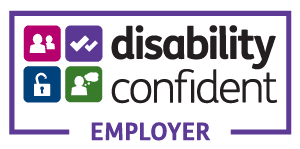Becoming a licensed physician in the United States is a significant milestone that marks the culmination of years of education, rigorous training, and dedication. While the process may seem daunting, understanding the steps involved can help you navigate the terrain smoothly. Whether you’re a recent medical graduate or seeking licensure, this guide will break down the key steps and provide helpful resources to get you started.
Why a Medical License Is Essential
A medical license isn’t just a formality—it’s your gateway to practicing medicine legally and ethically in the United States. It serves as an official recognition of your knowledge, skills, and dedication to the medical profession, allowing you to provide care with confidence and trust. Holding a valid medical license demonstrates your competence to patients, employers, and colleagues, ensuring you meet the rigorous standards required to deliver high-quality healthcare. It also plays a crucial role in ensuring patient safety, as licensed physicians are held accountable to state medical boards and ethical guidelines. Ultimately, a medical license affirms your commitment to the highest professional standards, opening doors to a rewarding and impactful career in medicine.
Step 1: Complete Your Medical Education
To qualify for a medical license in the US, you must graduate from an accredited medical school. Graduates from US-based institutions typically attend schools accredited by the Liaison Committee on Medical Education (LCME) (for MD programs) or the Commission on Osteopathic College Accreditation (COCA) (for DO programs). This formal education provides the foundational knowledge needed to become a physician, covering essential subjects such as anatomy, physiology, pharmacology, and clinical skills.
Step 2: Pass the USMLE or COMLEX Exams
Physicians must demonstrate their medical knowledge and clinical skills by passing a licensure examination.
- For MDs: Take the United States Medical Licensing Examination (USMLE), which comprises three steps:
- Step 1: Tests basic science knowledge.
- Step 2 (CK): Evaluates clinical knowledge.
- Step 3: Assesses clinical management and decision-making skills.
- For DOs: Take the Comprehensive Osteopathic Medical Licensing Examination (COMLEX-USA), which is equivalent to the USMLE but tailored to osteopathic medicine.
Step 3: Complete Residency Training
Residency training is mandatory for licensure and provides hands-on experience in your chosen specialty. Your training begins with a year-long internship or foundational year (PGY-1), where you gain practical experience across various medical specialties. Following this, you enter a residency program in your chosen specialty, which typically lasts between 3 to 7 years. For those looking to further specialize, fellowship programs offer additional training, typically lasting 1 to 3 years. Upon completing residency or fellowship, you must pass board certification exams to confirm your expertise.
Throughout your residency, you’ll receive supervised training while preparing for board certification, which is often required or highly valued by employers.

Step 4: Apply for State Licensure
Medical licenses are issued by individual state medical boards, each with its own requirements and application process. Key documents you’ll typically need include:
- Proof of medical education and training
- Exam scores (USMLE/COMLEX)
- Verification of any prior licensure
- Mental, moral, and physical fitness to safely practice medicine
- Background checks
For detailed information, visit the Federation of State Medical Boards (FSMB) website.
Pro Tip: If you plan to practice in multiple states, consider obtaining licensure through the Interstate Medical Licensure Compact (IMLC). It streamlines the process for physicians who meet eligibility criteria.
Step 5: Maintain Your License
In the United States, renewing your medical license varies by state but generally requires completing a set number of Continuing Medical Education (CME) hours within the renewal period, submitting an application through your state medical board, paying renewal fees, and providing proof of compliance with CME and other requirements. You may also need to disclose any legal or professional changes, such as malpractice suits or disciplinary actions, and some states require updated background checks. Medical licenses are typically valid for 1-3 years, and failing to renew on time can result in late fees or additional requirements for reinstatement. For state-specific details, you can consult your state medical board or the Federation of State Medical Boards (FSMB).
Conclusion
Obtaining your medical license is a challenging yet rewarding journey that requires a combination of education, exams, hands-on training, and dedication. While the process may feel complex, breaking it down step by step can make it more manageable. By following these outlined stages—completing medical education, passing exams, finishing residency, and securing licensure—you’re one step closer to becoming a licensed physician. Remember, each stage is an opportunity to grow and refine your skills, ensuring that you’re well-prepared for a successful career in medicine. Keep your commitment strong, and you'll be ready to make a meaningful impact in the healthcare field.
Explore Career Opportunities with Verovian Medical Agency
At Verovian Medical Agency, we offer physicians a wide range of locum and permanent roles across the US. Whether you're seeking flexibility or a long-term position, we have opportunities tailored to your needs. Register with us today to take the next step in your medical career and find the perfect role that suits your professional goals.




